|
 
 
Salsa Jukebox Sampler Sample Ken Bleu Favorites by Clicking the Song *Bang Bang *Azucar Negra *Solo Tu *Ritmo de Mi Cuba *Bang Bang *Azucar Negra *Solo Tu *Ritmo de Mi Cuba
















More Classic CD's






























Oldies JukeBox Samplers
Jose "El Canario" Alberto
Tribute Al Bravo *El as de la Rumba *La Paella *Como Quiera *La Feria de Las Flores *Sarabanda *La Rumbantela *Soy Salsero *Oye la Banda *Que Bonito Es Puerto Rico!
Isidro Infante
Otra Como Tu La Mitad de la Isla Quitame Ese Hombre Para Quererte El Pito Asi Se Goza Asi No Te Amara Jamas Cosas Como Tu Asi No Te Amara Jamas Santo Militar y Montuño Donde Quiera Que Estés
Celia Cruz
Amores de Un Dia Sazon Pasaporte Latinoaméricano De la Habana Hasta Aqui Ochun con Chango
Memories of Cal Tjader, Poncho Sanchez
Soul Sauce (Guarchi Guara)Tropicville I Showed Them Somewhere in the Night Song for Cal
Jovenes del Barrio,
Artemisa to New York Quisiera Ver (Que Rico Que Bueno) Cosas del Amor "Nuestro Tiempo de Amor" El Querendon
Books









More DVD's














|



Raul Rekow Karl Perrazo Supernatural Rhythm and Grooves 39.99

Traveling Through Time Giovanni Hidalgo Best Price 24.99

In the Tradition Giovanni Hidalgo Best Price $18.63

More DVD's, Instructional, Movies









 
|
Tito Puente
aka. Ernest Anthony Puente Jr., Ernest Anthony Puente, Jr.

  
By virtue of his warm, flamboyant stage manner, longevity, constant touring, and appearances in the mass media, Tito Puente is probably the most beloved symbol of Latin jazz. But more than that, Puente managed to keep his music remarkably fresh over the decades; as a timbales virtuoso, he combined mastery over every rhythmic nuance with old-fashioned showmanship -- watching his eyes bug out when taking a dynamic solo was one of the great treats for Latin jazz fans. A trained musician, he was also a fine, lyrical vibraphonist, a gifted arranger, and played piano, congas, bongos, and saxophone. Read More
  
Browse 234 Albums/Audio Samples with Tito Puente Performing
Francisco Aqubella
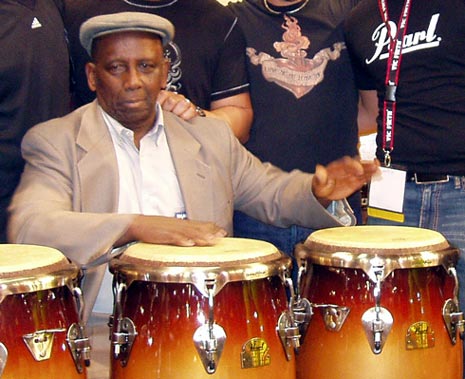
Francisco Aquabella is often credited with pioneering the innovative three conga drum playing method to both Jazz and the Afro Cuban Music. After Cal Tjader’s success in the 1950s master percussionists and musicians from Central America who had relocated to California suddenly found the opportunity to work in a variety of Jazz and Cuban music productions. Cuba’s Francisco Aguabella found his way to San Francisco and Los Angeles also, and performed with virtually every hall of fame caliber jazz and Latin music musicians. His influence on the new generation of percussion masters is quite evident and acknowledged by all.
  
Click Here to View and Sample Audio of 46 Albums With Francisco Aquabella
Giovanni Hidalgo

 
Widely acknowledged among the greatest congueros of his generation, Giovanni Hidalgo was born in San Juan, Puerto Rico in 1963, first taking up the drums five years later; the son of the noted percussionist Jose "Manengue" Hidalgo, he was educated in Latin rhythms from childhood onward, and as a teen regularly walked to local gigs with his congas strapped to his back. He soon caught the attention of the legendary Dizzy Gillespie, touring in his United Nations All-Star Orchestra for four years; Hidalgo also became a noted session player, recording with Freddie Hubbard, Paul Simon and Mickey Hart's Planet Drum project. In 1992, he recorded his debut solo LP, Villa Hidalgo; Worldwide followed a year later, and for 1997's Hands of Rhythm, a collaboration with pianist Michel Camilo, Hidalgo earned a Grammy nomination in the Best Latin Jazz Album category. His Greatest Hits collection followed the next year. Jason Ankeny
Related styles: Afro-Cuban Jazz | Jazz - general | Latin Jazz | World Fusion
  
Browse 49 Albums/Audio Samples with Giovanni Hidalgo Performing
Richie Flores

Richie Flores is one of the most respected conga players in the world. His career was established as a premier percussionist while playing with Eddie Palmieri, and other stellar Latin Jazz artists at the age of 17. He is now a seasoned veteran and one of the most sought out percussionists on the Latin music scene today. I caught up with Richie at his home in New York. He is currently working with Papo Vasquez and Dave Samuels, as well as freelancing .
Q: When and where were you born?
RF: Well, I was born in Brooklyn, New York, but I was raised in San Juan, Puerto Rico. My parents are both Puerto Rican.
Q: At what age did you start playing conga?
RF: I started playing conga at 5 years of age. More
  
Click Here to View 60 CD’s and Audio Samples Richie Flores Performs on
Mongo Santamaria
aka. Ramon "Mongo" Santamaria

    
A Grammy-winning Latin jazz musician who performed in Havana's legendary Tropicana Club, Ramon "Mongo" Santamaria would later find fame in New York City before releasing the massively popular album Mongo in 1959. A native of Havana who developed a widespread reputation for unique conga rhythms, Santamaria happily blended numerous musical genres in his 40-year career. After hitting it big with a 1963 recording of Herbie Hancock 's "Watermelon Man," the talented musician would garner a Grammy for his 1977 effort Amancer. Still recording well into the 1990s, film appearances by Santamaria included 1966's Made in Paris and 1988's Salsa. On February 1, 2003, Ramon "Mongo" Santamaria died in Miami after previously suffering a stroke and being held on life support. He was 85.
  
Browse 140 Albums/Audio Samples with Mongo Santamaria Performing
Ray Barretto
   
While Ray Barretto's congas have graced more recording sessions than virtually any other conguero of his time, he has also led some refreshingly progressive Latin jazz bands over the decades. His records often have a more tense, more adventurously eclectic edge than those of most conventional salsa groups, unafraid to use electronics and novel instrumental or structural combinations, driven hard by his rocksteady, endlessly flexible percussion work. This no doubt reflects Barretto's wide range of musical interests and also the fact that he came to Latin music from jazz, rather than the usual vice versa route for Latin-descended musicians. Indeed, he has said that he learned how to play swing-style before he came to master Latin grooves. Puerto Rican by extraction, Barretto took up the congas while stationed in Germany during an Army hitch. He began working with American jazz musicians upon his return to New York, eventually replacing Mongo Santamaria in the Tito Puente band for four years, beginning in the late '50s. Barretto made his debut as a leader for Riverside in 1962 and scored a crossover hit (number 17 on the pop charts) the following year on Tico with "El Watusi" (in tandem with a dance craze of the time). MORE
211 Albums/Audio Samples with Ray Barretto Performing
Upcoming Bios
Carlos Potato Valdez
The Legend of Cuban Percussion...
Carlos "Patato" Valdes
   
Culling tunes from two recent Grammy nods, Ritmo y Candela I and II, this set is a delightfully well-rounded offering of Cuban percussion master Carlos "Patato" Valdez's later work, with stellar contributions by musical director/reed player Enrique Fernandez and producer Greg Landau. Valdez was one of the original ambassadors of Cuban rhythm in the '50s, alongside better known percussionists such as Mongo Santamaria and Sab Martinez. Patato's warm presence is felt throughout the production while his performance often remains agreeably understated. Congolese soukous star Samba Mapangala and Senegalese multi-instrumentalist Abdou M'Boup make guest appearances on a spirited reworking of Horace Silver's Blues," as well as on "Kora-Son" and "Sangre de Africa." Samba's bright, high tenor swirls together with Patato's tuneful congas and M'boup's xalam (a Senegambian 3- to 5-stringed lute) for a seamless blending of idioms.
Sheila Escovedo
Candido Brief Bio
Jose Chepito Areas
Mike Carabello
Ralph McDonald
Master Henry Gipson
Bobby Allende
Marc Quinones
Willi Bobo Brief Bio
Chano Pozo Brief Bio
Ralph Irazarry
Luis Ramirez
Eddie Montalvo
Tata Guinness
Pancho Sanchez
Aspiring Players
Aspring Percussionist Submit Your Photo and Short Bio's to Kenny Candela.Faithweb.com to topazken@juno.com

Kenny is a Latin Percussionist performer, instructor, writer, and music songwriter. He has been blessed to perform with many internationally acclaimed musicians such as Grammy Winner Arturo Sandoval, Two Time Grammy Nominee, East St. Lousian, Russell Gunn, Internationally Acclaimed Jazz songstress, Rebecca Paris, Palmetto Recording artist, Gregory Tardy (bass player Steve Kirby (Cyrus Chestnut) and his Septet, the Rob Block Latin Jazz Septet, Webster University Professors Kim Portnoy, Paul DeMarinis, Jay Hungerford, Dan Eubanks, Randy Holmes, Kevin Gianinni, and other tremendous world class musicians.
He is best known in the E. St. Louis and St. Louis Music Scene by the name “Kenny Candela” and by His Salsa/Latin Jazz band, El Caribe Tropical with whom he co-formed with current Club Viva! Salsa Club owner Mateo Mulcahy, the late Placido Pinotoledo, Iris Concepcion Dillard, and Cuban’s Jamie Tovar and Miguel More. Other members of that group included trumpeter’s Cosimu Taylor, Danny Campbell, with bass player John Brill, Dan Cavelli trombone, Jamie Restrepo, bass, Carlos Diaz, and first cousin Eugene Alex “Bo” Deal, timbales and percussion. One of the highlights of the band was opening for Latin Jazz great Poncho Sanchez and his Latin Jazz ensemble.
Steve Kirby, Russell Gunn, Greg Tardy, Willie Akins, and Rob Block, All Played with the Salsa band, El Caribe Tropical in 1989 -1992. The name “Kenny Candela” was given him by Cuban, Placido Pinotoledo who played aguido with the Salsa band. Placido was a political prisoner in Cuba for 13 years and was in the United States only three months when he and Kenny met in 1988, forming the salsa band shortly thereafter.
Kenn y Candela, aka Bleu Campbell, also worked as comedian Steve Harvey’s Bio Writer and publicist in 1988 along with Harvey’s manager, the late Juan Hull, which is Ken’s first cousin. Russell Gunn enlisted Ken to produce the audio intro for his “Ethnomusicology 3” album as well. y Candela, aka Bleu Campbell, also worked as comedian Steve Harvey’s Bio Writer and publicist in 1988 along with Harvey’s manager, the late Juan Hull, which is Ken’s first cousin. Russell Gunn enlisted Ken to produce the audio intro for his “Ethnomusicology 3” album as well.
Ken started his music ties with the R&B Group, “Soul Steel” in 1973, in Omaha, Nebraska while in the U.S. Air Force. Soul Steel played weekly for about 3 months at a venue called “Allen’s Showcase”. They were the opening act for the soon to be R&B icons “The Whispers”.
Ken started Good Ground Records in 2002 for the purpose of representing world class musicians and their music in the standard Jazz, Latin Jazz, Latin, and R and B music fields. He also performs on, writes, co-writes, composes, and makes arrangements on several of the Good Ground Records CD projects.
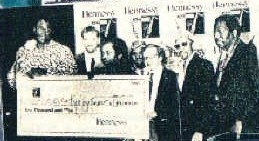
The Steve Kirby Sextet and the ten thousand dollar First Prize Winning Pose in the Hennessy Cognac Midwest Best Search Contest, 1991.. Pictured..Steve Kirby, Rob Block, Gary Sykes, Russell Gunn, Kim Portnoy, Ken Bleu, Willie Akins..
Ken Bleu Websites
Good Ground Records
GoodgroundMinistries
Make Money Website
Multi Level Marketing
Live Well
El Mejor DE Kenny Candela, Volume 1

Purchase Ken Bleu's CD for $12.00 Email topazken@juno.com
Classic Afro Cuban CD's
 
 
 
 
 
 
 
 
 
 
 
 
 
 
 
 
 
|
Candela.
Mixture of African Tears
And Caribbean dreams,
Born to celebrate the existence of sound
Through cueros,
Mulato,
Your music is bigger than your
Horizon,
And the Universe moves with your
Rhythm.
May your life be as big as your Imagination,
And your creation
The footstep of your Immortality.
There are millions of Souls Living
In your blood.
Make them Dance!

Copyright, 1995,Dr. Sandra Gomez
 Cuban Natives, the late PlacidoPinotoledo and Miguel More', Brother of Legendary Latin Singer Beny More, with "Kenny Candela" at performance Cuban Natives, the late PlacidoPinotoledo and Miguel More', Brother of Legendary Latin Singer Beny More, with "Kenny Candela" at performance
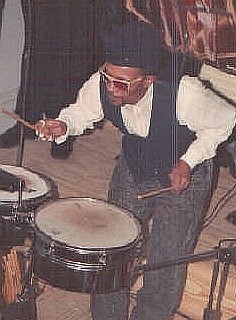

Discography
*East St. Louis Jazz From the Vault Series, Volume 1, The Spirit of Miles Davis” , Good Ground Records, 2005
*Rob Block Jazz Cone Tones, Good Ground Records, 2005
*El Mejor De Kenny Candela, Volume 1, Ground Records, 2005
*Del Alma, Latino Folklore, 1995
*Ethnomusicology 3, Russell Gunn, Justin Time Records 2003
|
Chano Pozo
a.k.a. Luciano Pozo Gonzales, Chano Pozo Gonzales
Chano Pozo played a major role in the founding of Latin jazz, which was essentially a mixture of bebop and Cuban folk music. He gained his musical background from Cuban religious cults. After moving to New York in 1947, he met Dizzy Gillespie who enthusiastically added him to his bebop big band. Among his features with Dizzy were "Cubana Be," "Cubana Bop," "Tin Tin Deo," and "Manteca"; Pozo co-wrote the latter two. Unfortunately, Chano Pozo had a hot temper and he was killed in a Harlem bar a month shy of his 34th birthday. Scott Yanow
Related styles: Afro-Cuban Jazz | Cuba | Latin | Latin Jazz | Salsa
|
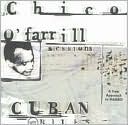
Cuban Blues: The Chico O'Farrill Sessions Chico O'Farrill
Candido
a.k.a. Candido Camero
Candido was the Latin percussionist of the 1950s, the first person that jazz people would call when they wanted a conga or bongo player. Early on, he had recorded in his native Cuba with Machito, and he worked regularly with the house band at the Tropicana Club in Havana for six years. Dizzy Gillespie heard him and encouraged him to move to New York in 1952. Soon, Candido was performing and recording with Gillespie. During 1953-1954, he was in the Billy Taylor quartet, and in 1954 he performed and recorded with Stan Kenton. Candido went on to record with the who's who of jazz, including Erroll Garner, Gene Ammons, Art Blakey, Sonny Rollins, Wes Montgomery, Elvin Jones, and Lionel Hampton, among many others. Scott Yanow
See all CDs
by this artist
BESTSELLER
FEATURING THIS ARTIST
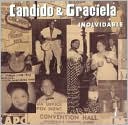
Candido
Our Price: $18.99
Willie Bobo
a.k.a. William Correa
Willie Bobo was one of the great Latin percussionists of his time, a relentless swinger on the congas and timbales, a flamboyant showman onstage, and an engaging if modestly endowed singer. He also made serious inroads into the pop, R&B and straight jazz worlds, and he always said that his favorite song was Antonio Carlos Jobim's "Dindi." Growing up in Spanish Harlem, Bobo began on the bongos at age 14, only to find himself performing with Perez Prado a year later, studying with Mongo Santamaria while serving as his translator, and joining Tito Puente for a four-year stint at age 19. Mary Lou Williams gave Correa his nickname Bobo when they recorded together in the early '50s. After working with Cal Tjader, Herbie Mann and Santamaria with whom he recorded the evergreen Latin standard "Afro-Blue" -- Bobo stepped forward in 1963 with his first recording as a leader, with Clark Terry and Joe Farrell as sidemen. Recording for Verve in the mid-'60s, Bobo achieved his highest solo visibility with albums that enlivened pop hits of the day with Latin rhythms, spelled by sauntering originals like "Spanish Grease" and "Fried Neck Bones and Some Home Fries." In addition, Bobo played on innumerable sessions in New York, recording with artists like Miles Davis, Cannonball Adderley, Herbie Hancock, Wes Montgomery, Chico Hamilton and Sonny Stitt. In 1969, he moved to Los Angeles where he led jazz and Latin jazz combos, appeared on Bill Cosby's first comedy series (1969-1971) and short-lived 1976 variety show, and recorded on his own for Sussex, Blue Note and Columbia. One of Bobo's last appearances, only three months before his death from cancer, was at the 1983 Playboy Jazz Festival where he reunited with Santamaria for the first time in 15 years. Richard S. Ginell
See all CDs
by this artist
BESTSELLER
FEATURING THIS ARTIST

Willie Bobo's Finest Hour Willie Bobo
Our Price: $11.99
Master Henry Gibson
 


"Master" Henry Gibson (Aug 9, 1942 - Dec 18, 2002) (not to be confused with the actor Henry Gibson) is the world's most recorded percussionist, appearing on MORE THAN 1200 albums, spanning a career of four decades.
Born in the USA, Master Henry began playing on the street, when he was noticed and picked up by professional musicians who took him on tour. One tour led to another, and soon he was playing and recording with artists such as Donny Hathaway (Everything Is Everything), Curtis Mayfield. While performing at the Hard Rock Cafe in Stockholm, Sweden, he met and later married his wife Anne, and made Stockholm his base. He died in Stockholm of a heart attack at age 60. His last concert appearance was with Khaled Habib and Zak Keith at the Lydmar Hotel in Stockholm.
His distinctive style can be heard among other recordings, on Curtis Mayfield's "Pusherman." An unsung Soul artist, Henry felt he had more than paid his dues. In his later years, he was less and less content with being a sideman and began asserting himself as the main attraction, placing his percussion at the forefront of shows. He was known for getting upset with audiences in noisy venues — after demanding their silence and full attention, he would instantly regain his focus and proceed to put on spellbinding performances on the bongos.
Months after his death in 2002, friends and musicians got together to organize a tribute concert at the Fasching jazz club in Stockholm. His music can still be heard daily on the radio, especially on recordings by Curtis Mayfield.
Celia Cruz
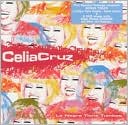
Celia Cruz was one of Latin music's most respected vocalists. A ten-time Grammy nominee, Cruz, who sang only in her native Spanish language, received a Smithsonian Lifetime Achievement award, a National Medal of the Arts, and honorary doctorates from Yale University and the University of Miami. A street in Miami was even renamed in her honor, and Cruz's trademark orange, red, and white polka dot dress and shoes have been placed in the permanent collection of the Smithsonian Institute of Technology. The Hollywood Wax Museum includes a statue of the Cuba-born songstress. According to the European Jazz Network, Cruz "commands her realm with a down-to-earth dignity unmistakably vibrant in her wide smile and striking pose."
One of 14 children, born in the small village of Barrio Santos Suarez, Havana, Cruz was drawn to music from an early age. Her first pair of shoes was a gift from a tourist for whom she sang. In addition to spending many evenings singing her younger siblings to sleep, Cruz sang in school productions and community gatherings. Taken to cabarets and nightclubs by an aunt, she was introduced to the world of professional music. At the encouragement of a cousin, Cruz began to enter and win local talent shows. Although her father attempted to guide her toward a career as a teacher, Cruz continued to be lured by music. In a 1997 interview, she said, "I have fulfilled my father's wish to be a teacher as, through my music, I teach generations of people about my culture and the happiness that is found in just living life. As a performer, I want people to feel their hearts sing and their spirits soar." Enrolling in Cuba's Conservatory of Music in 1947, Cruz found her earliest inspiration in the singing of Afro-Cuban vocalist Paulina Alvarez. Her first break came when she was invited to join the band la Sonora Matancera in 1950. The group was revered as the Latin equivalent of the Duke Ellington Orchestra. Cruz remained with the group for 15 years, touring throughout the world. She married the band's trumpet player Pedro Knight on July 14, 1962. With Fidel Castro's assuming control of Cuba in 1960, Cruz and Knight refused to return to their homeland and became citizens of the United States. Although they initially signed to perform with the orchestra of the Hollywood Palladium, Cruz and Knight eventually settled in New York. Knight became Cruz's manager in 1965, a position he held until the mid-'90s when he began to devote his attention to serving as her musical director and conductor of her band.
Leaving Sonora Matancera's band in 1965, Cruz launched her solo career with a band formed for her by Tito Puente. Despite releasing eight albums together, the collaboration failed to achieve commercial success. Cruz and Puente resumed their partnership with a special appearance at the Grammy Award ceremonies in 1987. Signed by Vaya, the sister label of Fania, Cruz recorded with Oscar D'Leon, Cheo Feliciano, and Hector Rodriquez in the mid- to late '60s. Cruz's first success since leaving Sonora Matancera came in 1974 when she recorded a duo album, Celia and Johnny, with Johnny Pacheco, trombone player and the co-owner of Fania. She subsequently began appearing with the Fania All Stars. Cruz's popularity reached its highest level when she appeared in the 1992 film The Mambo Kings. Cruz also appeared in the film The Perez Family. She sang a duet version of "Loco de Amor," with David Byrne, in the Jonathan Demme movie Something Wild. In 1998, Cruz released Duets, an album featuring her singing with Willie Colon, Angela Carrasco, Oscar D'Leon, Jose Alberto "El Canario," and La India. Cruz continued to record and perform until sidelined by a brain tumor in 2002. While recovering from surgery to remove the tumor, she managed to make it in to the studio in early 2003 to record Regalo de Alma. Her surgery was only partially successful and she died July 16, 2003. The passing of the "Queen of Salsa" left a huge gap in Latin music, but also a remarkable catalog to document her reign. Craig Harris
Top Selling Albums: La Negra Tiene Tumbao [Bonus Track]Homenaje a Beny More Ritmo en el Corazon Ritmo en el Corazon 100% Azucar!: The Best of Celia Cruz con la Sonora Matancera 100% Azucar!: The Best of Celia Cruz con la Sonora Matancera A Proper Introduction to Celia Cruz: Havana Days A Proper Introduction to Celia Cruz: Havana Days See All See All


|
|
| O |


|